
Category: Sports Hub
-

Strasburg softball season-opener to be broadcast
For the Strasburg Lady Indians’ fans that are unable to attend today’s softball game at Sterling, it is being broadcast by KPMX radio and is available online at kpmx.com. The frequency for the radio station itself is FM 105.7.Today’s matchup is the season-opener and the first of 16 games against the Patriot League for both squads. This year’s softball schedule has been truncated because COVID-19, and no other games except conference games will be contested before this year’s 16-team state tournament on Oct. 10 at the Aurora Sports Complex.
-

Daniel Bard makes Rockies roster after seven years
DENVER (AP) — Daniel Bard never ran from the mental hiccups that derailed a promising pitching career with the Boston Red Sox.
Through a half-dozen comeback attempts since his last appearance in the big leagues in 2013, Bard couldn’t rediscover his control and finally settled into a job last year as a player mentor and mental skills coach for the Arizona Diamondbacks.
In addition to offering advice or just a shoulder to players, he’d shag fly balls and play some catch during warm-ups. Soon, players began telling him his throws were pretty nasty and wondered why he wasn’t on a big league mound himself.
Intrigued, Bard got back on a mound in January in Charlotte, North Carolina.
“I was throwing mid-90s, throwing strikes with ease, and I hadn’t done that in eight years,” Bard said. “So, that was when I was like, ‘OK, I think I’m going to give this serious consideration.’”
Rockies manager Bud Black informed Bard, 34, on Friday that he’d made the roster.
“It’s going to be a great story when he comes back and pitches well,” Black said. “We’re optimistic about that.”
Even though it’s been more than seven years since he last pitched in the majors, Bard said he’s not even thinking about that first batter he’ll face when the 60-game season gets under way later this month.
“I haven’t even gotten there yet,” Bard said. “In many ways, I think just getting on a mound in the spring training games back in March was as big a hurdle as any and then having the chance to pitch in these intrasquad games” this month when teams reconvened following the coronavirus-caused delay.
“I’m sure there’ll be a little more adrenaline once we get the real thing going next week, but I’ll just take it one step at a time and trust that it’s going to be similar to what’s been going on,” Bard said.
Bard was considered the closer in waiting in Boston after a quick climb to the big leagues. The 28th overall pick in the 2006 draft, he reached the majors in 2009 and in his first 197 innings posted a 2.88 ERA with a whopping 9.7 strikeouts per nine innings.
He developed control issues in 2012 when his ERA ballooned to 6.22 and soon he was in the grips of a full-blown case of the yips, unable to consistently find the plate with any of his pitches. An abdominal injury limited him to just two appearances in 2013, and in subsequent seasons he had failed comeback attempts with the Rangers, Cardinals and Mets.
The Rockies gave him one last shot this year and he made the most of it, regaining not just his control but his confidence with a stellar spring and strong summer when he returned home to Greenville, South Carolina, during the coronavirus pandemic.
Just in signing a minor league deal with an invitation to spring training, “I was like, `This is really cool,’” Bard said. “I never thought I’d pitch (again) in any big league game, spring training or not.”
This spring, he finally felt comfortable again on the mound and in his skin.
“I’d signed all sorts of deals from 2012-17, a lot of different teams, trying to get back and I just was never comfortable because I wasn’t confident in what I was doing on the field,” Bard said. “And so much of my identity was tied up in that, so even in a clubhouse setting, any time you’re part of a team you want to be the guy who can pull his own weight. And I was terrible. I couldn’t throw strikes and I wasn’t a contributor, so that just makes you feel like you’re added baggage and weight that everybody else is having to take care of.
“Being in the clubhouse this year, I knew I was different out on the mound.”
Not even the hiatus from his teammates between mid-March and mid-July dampened Bard’s mood. Bard said that time back home in Greenville simulated the minor league stint he expected to start the season.
“It was a good thing for me, honestly,” he said. “It was a huge blessing in disguise. I was able to go home, I had a great group of guys to go work out with. We had the stadium opened to us and I was able to throw like 10-12 live BPs to Triple-A and big league hitters and got tons of feedback, got real comfortable with my repertoire.”
He had a couple of nervous moments when summer camp began at Coors Field earlier this month but he quickly saw that his sinker had enough movement at altitude.
“Maybe not exactly like at sea level but it definitely has enough movement to be a decent pitch,” he said.
In this weirdest of seasons, Bard figures he might be the biggest beneficiary. His control issues never had anything to do with performance anxiety in front of huge crowds, so the empty stands won’t bother him one bit, he said.
“If anything I’m very accustomed to pitching with no fans,” he said, “given all the back fields I’ve had to throw on.”
Notes: The Rockies released veteran relievers Bryan Shaw and Jake McGree on Friday. … Also making the roster were veterans Matt Kemp and Chris Owings
SPREAD THE NEWS
COMMENT, Like, Follow & SHARE @I70Scout
CURRENT EDITION
WEATHER & TRAFFIC PUZZLES RECENT NEWS ADVERTISE WITH US
-
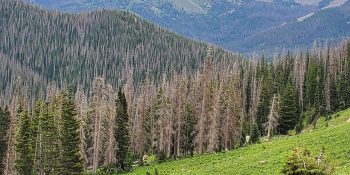
Wildlife officials focus on project to aid with management of Larimer County elk herds
FORT COLLINS, Colo. – Colorado Parks and Wildlife biologists are working on a project to obtain population demographic data to effectively and sustainably manage elk herds in Larimer County.
Portions of the project were made possible thanks to funding support from the Rocky Mountain Elk Foundation and the Habitat Partnership Program that is funded by revenue from the sale of big game licenses.
Wildlife biologist Angelique Curtis is leading the project designed to help with management decisions for the elk herd in Data Analysis Unit (DAU) E-4.
It specifically is targeting elk in Red Feather Lakes and the Poudre Canyon geographic areas. Crews will deploy 30 GPS satellite collars on cow (female) elk to assist in data collection and help with monitoring the herd.
“The goal of this study is to get an understanding of migrational movements of the E-4 elk and gather herd composition data to better model the dynamics of the population for sustainable harvest,” Curtis said. “The collared cow elk will be used as ‘judas’ elk to perform aerial surveys for annual classification data. In this instance a ‘judas’ animal is the cow elk that we can locate from the collar that will lead us to the herd where we can then classify the whole herd.”
The GPS collars will provide enough data in the first three years of deployment to design a population model for the herd. The study will last four to five years, with the remaining data collected after year three from the collars being used to refine the parameters of the model.
Deployment of the collars started last summer by trapping or ground darting elk in the Comanche Wilderness Area. Helicopter capture was also used this past winter to deploy additional units. The few remaining collars will go out late this month via ground darting and trapping.
Collars are spatially distributed in selected geographical areas to get a representative sample of the herd. The GPS collars will give location data every 13 hours to get a rolling time frame of movements throughout the year.
“The locations are transmitted to the biologists computers and phones, so they reduce the time needed to track the animals,” Senior Wildlife Biologist Shannon Schaller said. “This also ensures we collect data in remote areas. If a collared elk stops moving for more than eight hours, it will emit a mortality signal that biologists can attempt to retrieve to help them understand mortality causes.
“This technology has been a real benefit for wildlife biologists to collect data more efficiently.”
Wildlife managers need the new data to make informed recommended license allocations for hunters, as to date there is not much known about the elk in the DAU.
Previously, hunter harvest and voluntary elk tooth submissions from 2009 to present provided data on the herd composition (sex and age) to make harvest recommendations. The last aerial survey of the elk in the DAU was in 2006.
In 2014, estimated elk populations obtained from ground surveys reached the upper end of the management objectives – the herd size was increasing past the point of the carrying capacity the landscape would support. Thus, both bull and cow elk license numbers increased to help the herd stay within the management objective. Wildlife managers are seeking better data on herd trends to assess harvest limits to align with new population models.
Starting this December, Curtis along with wildlife officers, will conduct aerial surveys to gather baseline data using the GPS collars to locate the elk.
Once more data is compiled, the new population matrix model will be built with an understanding of the areas of greatest conservation, migration corridors, calving areas and habitat enhancement opportunities all designed to keep the elk herds healthy and within the management objectives.
SPREAD THE NEWS
COMMENT, Like, Follow & SHARE @I70Scout
CURRENT EDITION
WEATHER & TRAFFIC PUZZLES RECENT NEWS ADVERTISE WITH US
-
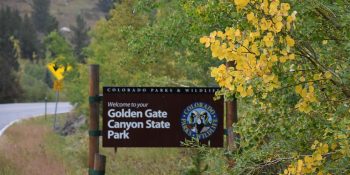
Backcountry camping at Golden Gate Canyon State Park moving to reservations only
Photo by Jason Clay/CPW
GOLDEN, Colo. – Starting July 15, backcountry camping sites at Golden Gate Canyon State Park will require a reservation.
Reservations can be made by calling 1-800-244-5613 or online at www.cpwshop.com. The backcountry campsite fee is $18. A vehicle pass is also required in addition to the camping fee.
The park offers four backcountry shelters and 20 backcountry tent sites that in the past were on a first-come, first-served basis year-round. These are backpacking, hike-in only campsites, there is no vehicle access. Average hiking distance is 1.5-2 miles one way. Backcountry camping provides a more primitive and somewhat unique camping experience, but with that comes responsibilities the user must assume to take care of the land.
After experiencing issues of misuse such as people not paying park fees, going to the wrong sites, leaving waste behind and igniting illegal fires at the backcountry sites, the decision was made to implement reservations. Part of that decision is to also help promote Leave No Trace principles, as Golden Gate Canyon is in the process of working with the Leave No Trace Center for Outdoor Ethics foundation to achieve Gold Standard Site designation.
The four backcountry shelters are three-sided structures, which are built in the Appalachian trail-hut tradition, have roofs and wood floors. Each hut can sleep up to six people without a tent.
The 20 backcountry tent sites are open year-round. Many of these sites are located in large, scenic meadows and are surrounded by 10,000-foot peaks. Each site is limited to a maximum of six people and are also equipped with bear boxes.
ALL FIRES ARE PROHIBITED IN THE BACKCOUNTRY
Please adhere to the following Leave No Trace Principles:
1 – Know before you go
2 – Stick to trails and camp overnight right
3 – Pack out your trash, properly dispose of it and pick up all dog waste
4 – Leave it as you find it
5 – Be careful with stoves – no fires allowed
6 – Keep wildlife wild – use bear boxes
7 – Share our trails and manage your pet
Photos below courtesy of Dustin Doskocil.
SPREAD THE NEWS
COMMENT, Like, Follow & SHARE @I70Scout
CURRENT EDITION
WEATHER & TRAFFIC PUZZLES RECENT NEWS ADVERTISE WITH US
-

Softball, baseball sign-ups scheduled
STRASBURG — Registration for the Strasburg Parks & Recreation District youth baseball and softball camps is coming soon.
Each camp is limited to 25 players. Registration, which costs $20 per player, includes a camp T-shirt. Players should bring a glove, water bottle, bat and helmet, if possible.
To sign up, visit www.strasburgparks.org.
baseball
The baseball camp will start with first- through third-graders from 5-6 p.m. each day; fourth- and fifth-graders from 6:15-7:15 p.m.; and sixth- through eighth-graders from 7:30-8:30 p.m., Monday through Thursday, July 13-16, at the north baseball field.
Registration is due by Thursday, July 9.
softball
The softball camp will begin with first- through third-graders from 5-6 p.m.; fourth- and fifth-graders from 6:15-7:15 p.m.; and sixth- through eighth-graders from 7:30-8:30 p.m., Monday through Thursday, July 20-23, at the south softball field.
Registration is due by Thursday, July 16.
SPREAD THE NEWS
COMMENT, Like, Follow & SHARE @I70Scout
CURRENT EDITION
WEATHER & TRAFFIC PUZZLES RECENT NEWS ADVERTISE WITH US
-
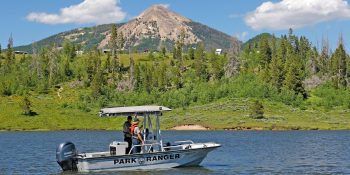
Operation Dry Water aims to reduce boating under the influence this holiday weekend
DENVER – Boaters heading out onto Colorado waters this weekend will see additional Colorado Parks and Wildlife officers enforcing boating under the influence (BUI) laws as part of the national Operation Dry Water campaign from July 3-July 5.
This three-day enforcement operation is timed closely to the July 4th holiday each year and is designed to both educate boaters on the dangers of boating under the influence, as well as reduce the number of accidents and deaths related to alcohol and drug use on our waterways.
“It’s so important for people to understand the dangers of drinking and boating, especially heading into a busy holiday season,” says Grant Brown, Colorado’s Boating Safety Program Manager. “Alcohol use is the leading factor in recreational boating deaths in the United States. CPW wants Colorado boaters to get out on the water and have a great time, but you have to do so responsibly. At a minimum, you may receive a citation, but there’s a chance that serious injuries can also happen. Your adult beverages will be waiting when you get back to shore – taking chances with other people’s lives just isn’t worth it.”
Operation Dry Water’s mission is to raise awareness among recreational boaters about the dangers and consequences of boating under the influence, which include:
• Alcohol impairs judgment, balance, vision and reaction time; on the water, that can increase fatigue and susceptibility to the effects of cold-water immersion.
- Sun, wind, noise, vibration and motion are added factors found in a boating environment; all of these intensify the effects of alcohol, drugs, and some medications. A general rule to remember is that one drink on land is equivalent to three drinks on the water.
- Alcohol can be dangerous for passengers, too. Intoxication on board can cause injuries from slips, falls overboard, and other dangerous accidents. Penalties for boating under the influence include receiving fines, having your boat impounded, potential jail time and loss of boating privileges. Boaters with a blood alcohol content (BAC) level above the .08 state limit should expect to be arrested for BUI. In Colorado, Operation Dry Water operations will include increased patrols, breathalyzer tests, and checkpoints as well as boater education and outreach. Despite increased patrol activity, the best enforcement tool CPW has is hearing from other boaters out on the water.
“If you’re on the water and see other boaters drinking while manning their boat, or acting dangerously on their watercraft, please let us know,” says Brown. “Just as you’d call 911 to report a drunk driver, calling 911 to report drinking and boating allows dispatch to get the nearest authorities out to help eliminate potential safety issues for your family and fellow boaters.”
The dangers of operating under the influence of marijuana are the same as those from alcohol, and the penalties are identical for either substance. Open display or use of marijuana is illegal on public property, which includes many of the lakes, reservoirs and rivers in Colorado.
Learn more about the consequences of boating under the influence at www.operationdrywater.org. For more information on boating safety, visit cpw.state.co.us.
SPREAD THE NEWS
COMMENT, Like, Follow & SHARE @I70Scout
CURRENT EDITION
WEATHER & TRAFFIC PUZZLES RECENT NEWS ADVERTISE WITH US
-
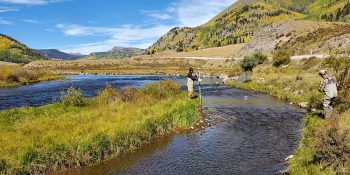
Fishing is Fun grants awarded for 8 Colorado angling projects
In-stream habitat improvements for brown trout on this section of the Conejos River in the San Luis Valley will occur thanks to this year’s Fishing is Fun grants. This is one of eight projects providing funds to improve angling opportunities in Colorado.
DENVER – Colorado Parks and Wildlife has awarded $650,000 to eight Fishing is Fun (FIF) projects, all geared to improve angling opportunities in the state of Colorado. The approved projects include improved angling access, habitat improvement, and trail and boat access. Funding recipients include projects in the San Luis Valley, on the Yampa and Crystal rivers, and in the northern Front Range in Denver and Mead.
“The angling opportunities that Colorado waters provide are part of what makes this state so special,” said Dan Prenzlow, Director of Colorado Parks and Wildlife. “Not only does the Fishing is Fun program help revitalize aquatic ecosystems across the state, it also ensures that residents and visitors will continue to have improved angling access for years to come.”
Among the projects approved for funding are:
Wolf Lake in El Paso County
Angling access will be significantly improved with the construction of two fishing piers on a newly constructed reservoir in a rapidly growing area on the northeastern side of Colorado Springs. The project will increase angling access on a 12-acre reservoir in a part of El Paso County that currently has limited angling options. “It is great to have a project like this that local kids can use to get introduced to the sport and that experienced anglers can use to stay engaged,” said Jim Guthrie, CPW’s Fishing Is Fun Program Coordinator.
Conejos Meadows in the San Luis Valley
In-stream habitat improvements will occur on 1.75 miles of the Conejos River downstream from Platoro Reservoir in the San Luis Valley. The project will address low-flow conditions during droughts and winter reservoir operations and will protect conditions for the existing self-sustaining brown trout population.
“The Conejos Meadows Resilient Habitat project is a model for projects that benefit fish habitat and wild self-maintaining trout populations, while also providing benefits to irrigation water users below a working reservoir,” said Kevin Terry, Rio Grande Basin Project Manager for Trout Unlimited. “Partnerships on the Conejos River between Trout Unlimited, CPW, and the Conejos Water Conservancy District ensure that each project identifies and maximizes benefits for the entire water community and the environment at the same time.”
Uncompaghre River in Montrose
This grant will restore quality angling conditions along a 0.65-mile section of the Uncompaghre River in the heart of Montrose. The multi-year project will cover 1.6 miles of river and develop in-channel habitat, stabilize river banks and connect to a major new GOCO-funded trail system.
“This project delivers on the Montrose community’s desire to see stewardship of the city’s natural resources, which was identified as a top priority during the city’s comprehensive planning process,” said City of Montrose Grant Coordinator Kendall Cramer. “The restoration of our river enhances aquatic and wildlife habitat, provides new opportunities for anglers and other recreationists, and will serve as a catalyst for economic growth, particularly in the outdoor industry sector in Montrose.”
Fishing alone contributes $2.4 billion dollars in economic output per year, supporting over 17,000 jobs in Colorado according to CPW’s 2017 economic study.
For over 30 years, FIF has supported more than 375 projects in nearly every county in the state, improving stream and river habitats, easing public access to angling waters, developing new angling opportunities for youth and seniors and more.
The program typically provides up to $400,000 annually from the Federal Sport Fish Restoration Program (SFR). This year the program awarded an additional $250,000 from revenue generated through the wildlife sporting license plate. “Sportsmen and women who have signed up for the license plate have helped make more projects possible. That is a big boost to making angling accessible to many more people,” said Guthrie. The $650,000 total was met with more than $2 million in local support for the eight projects approved in 2020 (matching funds are required for the program).
Additional Fishing is Fun program details and requirements can be found on CPW’s website.
Fishing is Fun 2020 grants include:
Denver Parks and Recreation
Lily Pond bank stabilization and habitat improvement
$40,000
Yampa Valley Stream Improvement Charitable Trust
Planning for 0.8 mile of in-stream habitat improvement at Pleasant Valley
$30,000
San Luis Valley Trout Unlimited
1.75 miles of in-stream habitat and low-flow improvement at Conejos Meadows
$110,600
City of Montrose
In-channel habitat improvement and realignment on Uncompaghre River
$284,588
Nor’wood Development Group, El Paso County
Fishing piers and angler platform at Wolf Lake
$38,075
Town of Mead
Fishing pier and boat ramp at Highland Lake
$89,625
Town of Carbondale
In-stream habitat and angler access at Crystal River Riverfront Park
$30,000
Town of Parachute
2 vault toilets near boat ramps on Colorado River
$27,112
SPREAD THE NEWS
COMMENT, Like, Follow & SHARE @I70Scout
CURRENT EDITION
WEATHER & TRAFFIC PUZZLES RECENT NEWS ADVERTISE WITH US
-
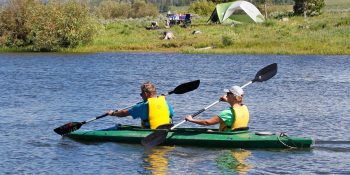
Water enthusiasts should always wear personal flotation devices (PFD)
Now that summer is officially here, Coloradans head to the state’s rivers, lakes and reservoirs to participate in a variety of water sports activities. Colorado Parks and Wildlife remind outdoor recreationists to be safe on the water and wear a life vest, also known as a personal floatation device PFD).
Water sports are a great way to have fun in the sun, whether you go powerboating, paddleboarding, sailboating, windsurfing, kayaking, tubing or canoeing. In order to keep water-based activities carefree and risks at a minimum, it’s important to keep basic safety practices in mind.
The spring run-off has filled reservoirs and water is still very cold. If you fall into water that’s barely 50 degrees, hypothermia can set in quickly and be life-threatening. People recreating on Colorado’s natural waters are urged to wear PFD no matter if they are on a river, lake, pond or reservoir.
“You should always wear a life vest, paddle with a buddy, know your limitations and scout rapids prior to floating them,” said Grant Brown, boating safety program manager with Colorado Parks and Wildlife.
Water drownings are not uncommon in Colorado, and park rangers and search and rescue teams have already responded to multiple drownings this season. The impact of cold water can be dangerous when people are unexpectedly thrown overboard and required to swim when in distress. Paddle craft, such as kayaks and paddleboards, are especially vulnerable when the wind picks up, which it does most every afternoon in Colorado.
CPW urges all boaters, no matter what type of craft they are using, to wear PFDs when on the water. Regulations require that the number of PFDs on a boat match the number of people on board. Children 12 years old and younger must always wear a PFD when on the water. The rules apply to all types of boats and stand-up paddleboards.
Outdoor recreationists interested in participating in water sports can rent or loan equipment and PFD are various state parks. CPW offers a park finder toolto search Colorado state parks that offer water activities and rental services. Dogs are encouraged to wear PFD as well in case a boat unexpectedly capsizes.
Off the water, CPW reminds all recreationists that they are required to follow the rules of Governor Jared Polis’s “safer-at-home” order while recreating. Follow safety protocol at boating inspections and when getting into the water. Maintain a distance of six feet from other people, and wear a mask around other people if water entry locations appear crowded.
For more information on boating regulations and safety information, visit https://cpw.state.co.us/learn/Pages/BoatingSafety.aspx.
SPREAD THE NEWS
COMMENT, Like, Follow & SHARE @I70Scout
CURRENT EDITION
WEATHER & TRAFFIC PUZZLES RECENT NEWS ADVERTISE WITH US
-

State health department releases guidance for personal and outdoor recreation Parks, pools, gyms and guided activities allowed with precautions
DENVER, June 4, 2020: In accordance with Governor Jared Polis’ executive order and Public Health Order 20-28, Safer at Home and in the Vast, Great Outdoors, the Colorado Department of Public Health and Environment today finalized guidance outlining the steps required to allow personal and outdoor recreation activities to resume while minimizing the potential spread of COVID-19.
The new guidance addresses personal recreation (parks, pools, gyms and fitness facilities, and organized recreational sports) and outdoor recreation (non-guided and guided tours such as rafting, fishing, horseback riding, etc.)
Guidance for personal recreation
Guidance for outdoor recreation
The department sought and incorporated feedback from the public and stakeholders before finalizing the guidance released today. The department also released updated and expanded guidance for houses of worship.
Activities that can be done in groups of 10 or fewer, with people physically distanced and taking precautions such as hand washing and mask wearing (when possible) can now occur, unless they are explicitly prohibited in the public health order.
Public health orders establish requirements that Coloradans must follow while guidance documents provide clear instructions for how businesses and individuals can comply with the public health orders.
For extensive information on Safer-at-Home, including sector-specific guidance, please visit covid19.colorado.gov/safer-at-home.
Continue to stay up to date by visiting covid19.colorado.gov.
photo credit: MGN Online
SPREAD THE NEWS
COMMENT, Like, Follow & SHARE @I70Scout
CURRENT EDITION
WEATHER & TRAFFIC PUZZLES RECENT NEWS ADVERTISE WITH US
-
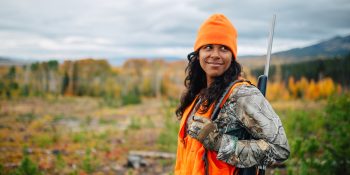
Applications open June 5 for CPW’s new secondary big game draw
DENVER – Beginning Friday, June 5, hunters will have the option to apply to draw a license in Colorado Parks and Wildlife’s new secondary big game draw. The secondary draw replaces the old leftover draw. The secondary draw opens after the results of the annual primary big game draw have been posted.
New in 2020, the secondary draw is open to everyone, whether they applied for the primary draw or not. Most elk, deer, pronghorn and bear licenses not issued through the primary draw will now be made available in the secondary draw.
What’s different?
The new secondary draw means increased opportunity. The old leftover draw was only available to customers who participated in the primary draw, did not draw, and only offered deer and elk licenses. The new secondary draw offers two more species: bear and pronghorn licenses, in addition to deer and elk licenses, and is open to all customers whether they applied in the primary draw or not.
The new process provides a preference for youth hunters. Youth hunters have 100% preference in the secondary draw. The secondary draw processes all youth application choices prior to processing adult choices. A hunt could be completely drawn by youth before the adult application stage of the draw.
What to know before you apply
The application fee. You’ll still be charged a fee for applying, whether or not you draw a license. The $7 resident and $9 nonresident application fees apply per species for the secondary draw as well as the primary draw.
No primary draw? No problem. You can apply for the secondary big game draw without having applied for the primary big game draw.
A qualifying license is required. Resident and nonresident hunters must purchase or have purchased one of the following:
- 2020 annual spring turkey license
- 2020 annual small game license
- 2020 annual youth small game license
Qualifying license valid for Colorado residents only include:
- 2020 annual resident combination small game/fishing license
- Veteran’s lifetime resident combination small game/fishing license
- Annual resident senior combo small game/fishing (the previous licenses are valid March 1, 2020 – March 31, 2021)
- A disabled resident first responder lifetime combo small game/fishing
No preference points. You don’t use any preference points if you draw a license in the secondary draw. You also cannot apply for a preference point in the secondary draw.
No group hunts. You cannot apply as a group in the secondary draw.
When can I apply?
Secondary draw applications will be accepted beginning at 8 p.m., June 5 – July 7, 8 p.m. MST.
A list of hunt codes eligible for the secondary draw will be posted online on June 5.
Any licenses remaining after the secondary draw as well as those which are eligible for public reissue (except for Ranching for Wildlife licenses) will be placed on the leftover list and available for purchase beginning at 9 a.m. MST on August 4.
Applications for both the primary and secondary draws are only available online or by phone.
NOTE: “Unsuccessful options” have been removed from the draw application process. Over-the-counter unlimited licenses will be available for purchase starting at 9 a.m. on August 6.
SPREAD THE NEWS
COMMENT, Like, Follow & SHARE @I70Scout
CURRENT EDITION
WEATHER & TRAFFIC PUZZLES RECENT NEWS ADVERTISE WITH US



